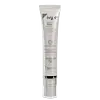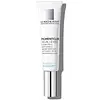What's inside
What's inside
 Key Ingredients
Key Ingredients

 Benefits
Benefits

 Concerns
Concerns

 Ingredients Side-by-side
Ingredients Side-by-side

Butylene Glycol
HumectantMagnesium Ascorbyl Phosphate
AntioxidantAtelocollagen
Skin ConditioningSodium Chondroitin Sulfate
Skin ConditioningXanthan Gum
EmulsifyingPolysorbate 20
EmulsifyingSodium Acrylates Copolymer
Hydrogenated Polyisobutene
EmollientPhospholipids
Skin ConditioningPolyglyceryl-10 Stearate
Skin ConditioningHelianthus Annuus Seed Oil
EmollientDimethicone
EmollientCyclopentasiloxane
EmollientDimethicone Crosspolymer
Emulsion StabilisingGlycine
BufferingHesperidin Methyl Chalcone
AntioxidantSteareth-20
CleansingDipeptide-2
Skin ConditioningPalmitoyl Tetrapeptide-7
Skin ConditioningHyaluronic Acid
HumectantSilanetriol
Caprylyl Glycol
EmollientPhenoxyethanol
PreservativeBehenyl Alcohol
EmollientGlyceryl Stearate
EmollientLecithin
EmollientGlycine Soja Sterols
EmollientMica
Cosmetic ColorantTitanium Dioxide
Cosmetic ColorantPsidium Guajava Fruit Extract
AstringentVitis Vinifera Fruit Extract
Skin ConditioningTriticum Vulgare Sprout Extract
Skin ConditioningDisodium EDTA
Parfum
MaskingWater
Skin ConditioningButylene Glycol, Magnesium Ascorbyl Phosphate, Atelocollagen, Sodium Chondroitin Sulfate, Xanthan Gum, Polysorbate 20, Sodium Acrylates Copolymer, Hydrogenated Polyisobutene, Phospholipids, Polyglyceryl-10 Stearate, Helianthus Annuus Seed Oil, Dimethicone, Cyclopentasiloxane, Dimethicone Crosspolymer, Glycine, Hesperidin Methyl Chalcone, Steareth-20, Dipeptide-2, Palmitoyl Tetrapeptide-7, Hyaluronic Acid, Silanetriol, Caprylyl Glycol, Phenoxyethanol, Behenyl Alcohol, Glyceryl Stearate, Lecithin, Glycine Soja Sterols, Mica, Titanium Dioxide, Psidium Guajava Fruit Extract, Vitis Vinifera Fruit Extract, Triticum Vulgare Sprout Extract, Disodium EDTA, Parfum, Water
Water
Skin ConditioningGlycerin
HumectantButylene Glycol
HumectantDimethicone
EmollientNiacinamide
SmoothingIsopropyl Palmitate
EmollientCetearyl Alcohol
EmollientAmmonium Polyacryloyldimethyl Taurate
Emulsion StabilisingButyrospermum Parkii Butter
Skin ConditioningPEG-100 Stearate
PEG/PPG/Polybutylene Glycol-8/5/3 Glycerin
HumectantStearic Acid
CleansingGlyceryl Stearate
EmollientDimethicone/Vinyl Dimethicone Crosspolymer
Skin ConditioningDimethiconol
EmollientCaffeine
Skin ConditioningSodium Hydroxide
BufferingSilica
AbrasiveGinkgo Biloba Leaf Extract
Skin ConditioningPalmitic Acid
EmollientAlumina
AbrasivePhenylethyl Resorcinol
AntioxidantAscorbyl Glucoside
AntioxidantPoloxamer 338
EmulsifyingDisodium EDTA
Isopropyl Titanium Triisostearate
EmollientHydrolyzed Rice Protein
Skin ConditioningCaprylyl Glycol
EmollientXanthan Gum
EmulsifyingFerulic Acid
AntimicrobialPhenoxyethanol
PreservativeCI 77491
Cosmetic ColorantCI 77492
Cosmetic ColorantCI 77499
Cosmetic ColorantCI 77891
Cosmetic ColorantMica
Cosmetic ColorantWater, Glycerin, Butylene Glycol, Dimethicone, Niacinamide, Isopropyl Palmitate, Cetearyl Alcohol, Ammonium Polyacryloyldimethyl Taurate, Butyrospermum Parkii Butter, PEG-100 Stearate, PEG/PPG/Polybutylene Glycol-8/5/3 Glycerin, Stearic Acid, Glyceryl Stearate, Dimethicone/Vinyl Dimethicone Crosspolymer, Dimethiconol, Caffeine, Sodium Hydroxide, Silica, Ginkgo Biloba Leaf Extract, Palmitic Acid, Alumina, Phenylethyl Resorcinol, Ascorbyl Glucoside, Poloxamer 338, Disodium EDTA, Isopropyl Titanium Triisostearate, Hydrolyzed Rice Protein, Caprylyl Glycol, Xanthan Gum, Ferulic Acid, Phenoxyethanol, CI 77491, CI 77492, CI 77499, CI 77891, Mica
 Reviews
Reviews

Ingredients Explained
These ingredients are found in both products.
Ingredients higher up in an ingredient list are typically present in a larger amount.
Butylene Glycol (or BG) is used within cosmetic products for a few different reasons:
Overall, Butylene Glycol is a safe and well-rounded ingredient that works well with other ingredients.
Though this ingredient works well with most skin types, some people with sensitive skin may experience a reaction such as allergic rashes, closed comedones, or itchiness.
Learn more about Butylene GlycolCaprylyl Glycol is a humectant and emollient, meaning it attracts and preserves moisture.
It is a common ingredient in many products, especially those designed to hydrate skin. The primary benefits are retaining moisture, skin softening, and promoting a healthy skin barrier.
Though Caprylyl Glycol is an alcohol derived from fatty acids, it is not the kind that can dry out skin.
This ingredient is also used as a preservative to extend the life of products. It has slight antimicrobial properties.
Learn more about Caprylyl GlycolDimethicone is a type of synthetic silicone created from natural materials such as quartz.
What it does:
Dimethicone comes in different viscosities:
Depending on the viscosity, dimethicone has different properties.
Ingredients lists don't always show which type is used, so we recommend reaching out to the brand if you have questions about the viscosity.
This ingredient is unlikely to cause irritation because it does not get absorbed into skin. However, people with silicone allergies should be careful about using this ingredient.
Note: Dimethicone may contribute to pilling. This is because it is not oil or water soluble, so pilling may occur when layered with products. When mixed with heavy oils in a formula, the outcome is also quite greasy.
Learn more about DimethiconeDisodium EDTA plays a role in making products more stable by aiding other preservatives.
It is a chelating agent, meaning it neutralizes metal ions that may be found in a product.
Disodium EDTA is a salt of edetic acid and is found to be safe in cosmetic ingredients.
Learn more about Disodium EDTAGlyceryl Stearate is a mix of glycerin and stearic acid.
It is used to stabilize the mixing of water and oil ingredients. By preventing these ingredients from separating, it can help elongate shelf life. It can also help thicken the product's texture.
As an emollient, it helps soften skin and supports barrier-replenishing ingredients.
In cosmetics, Glyceryl Stearate is often made from vegetable oils or synthetically produced.
This ingredient may not be fungal-acne safe
Fun fact: The human body also creates Glyceryl Stearate naturally.
Learn more about Glyceryl StearateMica is a naturally occurring mineral used to add shimmer and color in cosmetics. It can also help improve the texture of a product or give it an opaque, white/silver color.
Serecite is the name for very fine but ragged grains of mica.
This ingredient is often coated with metal oxides like titanium dioxide. Trace amounts of heavy metals may be found in mica, but these metals are not harmful in our personal products.
Mica has been used since prehistoric times throughout the world. Ancient Egyptian, Indian, Greek, Roman, Aztec, and Chinese civilizations have used mica.
Learn more about MicaPhenoxyethanol is a preservative that has germicide, antimicrobial, and aromatic properties. Studies show that phenoxyethanol can prevent microbial growth. By itself, it has a scent that is similar to that of a rose.
It's often used in formulations along with Caprylyl Glycol to preserve the shelf life of products.
Water. It's the most common cosmetic ingredient of all. You'll usually see it at the top of ingredient lists, meaning that it makes up the largest part of the product.
So why is it so popular? Water most often acts as a solvent - this means that it helps dissolve other ingredients into the formulation.
You'll also recognize water as that liquid we all need to stay alive. If you see this, drink a glass of water. Stay hydrated!
Learn more about WaterXanthan gum is used as a stabilizer and thickener within cosmetic products. It helps give products a sticky, thick feeling - preventing them from being too runny.
On the technical side of things, xanthan gum is a polysaccharide - a combination consisting of multiple sugar molecules bonded together.
Xanthan gum is a pretty common and great ingredient. It is a natural, non-toxic, non-irritating ingredient that is also commonly used in food products.
Learn more about Xanthan Gum